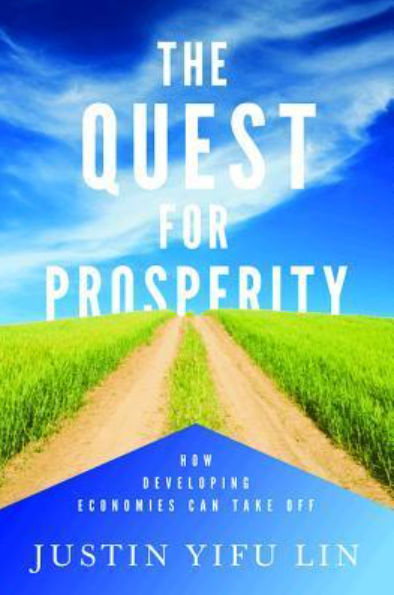The Quest for Prosperity: How Developing Economies Can Take Off by Justin Yifu Lin

ONE
New Challenges and New Solutions
Since becoming the World Bank’s chief economist, I have had
ample opportunity to reflect on an old American saying: “Be careful
what you wish for, you might just get it!” For better or worse, the beginning
of my tenure coincided with the eruption of the most serious financial and
economic crisis, both in magnitude and in scope, since the Great Depres-
sion. No country has been immune to the economic slowdown. Most eco-
nomic and financial experts severely underestimated its timing, speed, and
severity. As a result, despite strong macro policy responses, the current situ-
ation remains full of uncertainties.
This crisis, unlike many other crises preceding it, was not the fault of
developing countries. It was an unexpected setback to and challenge for
their macro management. Some of them had little exposure to the financial
derivatives that triggered the crisis and had the fiscal space and the foreign
reserves to apply strong policy stimulus programs. But many others had
enormous short-term capital inflows through multinational bank branches,
large current account deficits, overpriced housing markets, or limited fiscal
space for countercyclical measures.
The amplitude, brutality, and unfairness of the crisis was perhaps most
obvious in Sub-Saharan Africa. Despite being the global economy’s least
integrated region, it was perhaps the worst hit by the crisis. Each channel for
the crisis to affect the continent has had a particularly nefarious impact. The
decline in commodity prices, though a benefit to oil-importing countries,
has led to a substantial decline in exports and government revenue for many
commodity exporters. Even countries that saved their windfalls when prices
were high suffered because their nonoil sectors are small and highly depen-
dent on government spending.
Private capital flows, which had surged to record levels prior to the reces-
sion (and exceeded foreign aid to the continent) declined abruptly. African
stock markets fell by an average of 40 percent, with some, such as that of
Nigeria, falling by more than 60 percent.
Workers’ remittances, which had
also been on the rise and had become a major source of growth for labor-
exporting countries, also declined substantially. Only foreign aid continued
to rise, but it remained well short of the commitments made by G-8 coun-
tries at the Gleneagles Summit in 2005, when the global economy was more
robust. With mounting pressures in donor countries to stimulate their own
economies and plan for fiscal consolidation, it could be expected that the
volumes of aid they gave to Africa would be lower in the years ahead. Such
developments were likely to slow their growth rates and derail progress
toward the Millennium Development Goals.
Luckily, through a joint effort, the world has avoided the worst. Policy-
makers quickly understood the almost unprecedented scale and dangers of
the crisis. Other post–World War II economic crises occurred either in
some individual developing country or region (East Asia, Latin America,
Mexico, or the Russian Federation) or in only one or two high-income coun-
tries (Japan, Sweden). Their impact was a small fraction of global GDP. This
time, the crisis struck almost all advanced and developing economies
at the same time, making it impossible for one country to escape high un-
employment and large excess capacity through individual actions on mone-
tary, exchange rate, or trade policies.
Thanks to the strong policy coordination of the G-20 countries, the world
escaped another Great Depression. Policymakers responded swiftly and cre-
atively to the crisis, using various instruments, including credible pledges to
free trade, large-scale fiscal stimulus packages, very accommodative mone-
The Quest for Prosperity: How Developing Economies Can Take Off by Justin Yifu Lin




